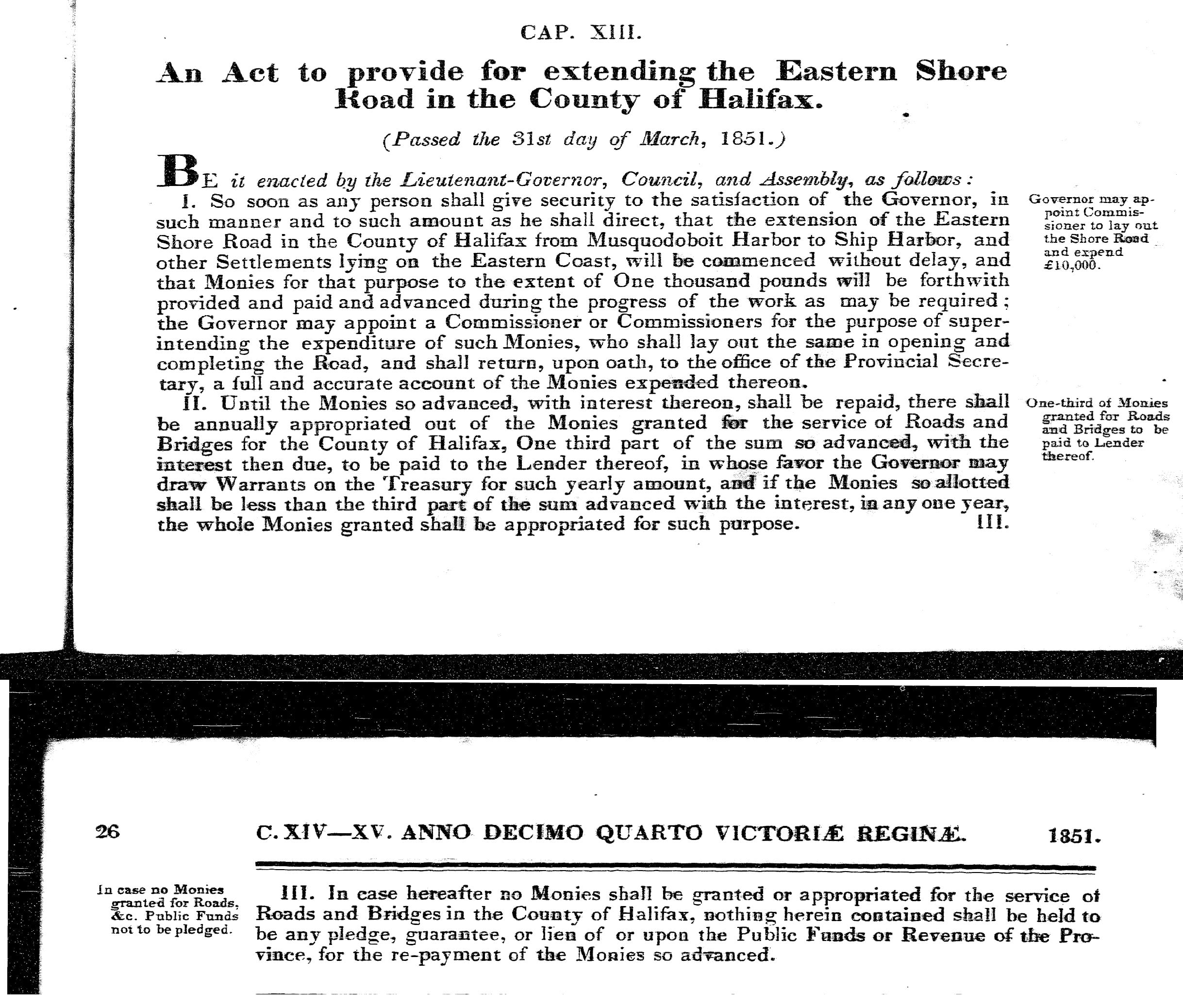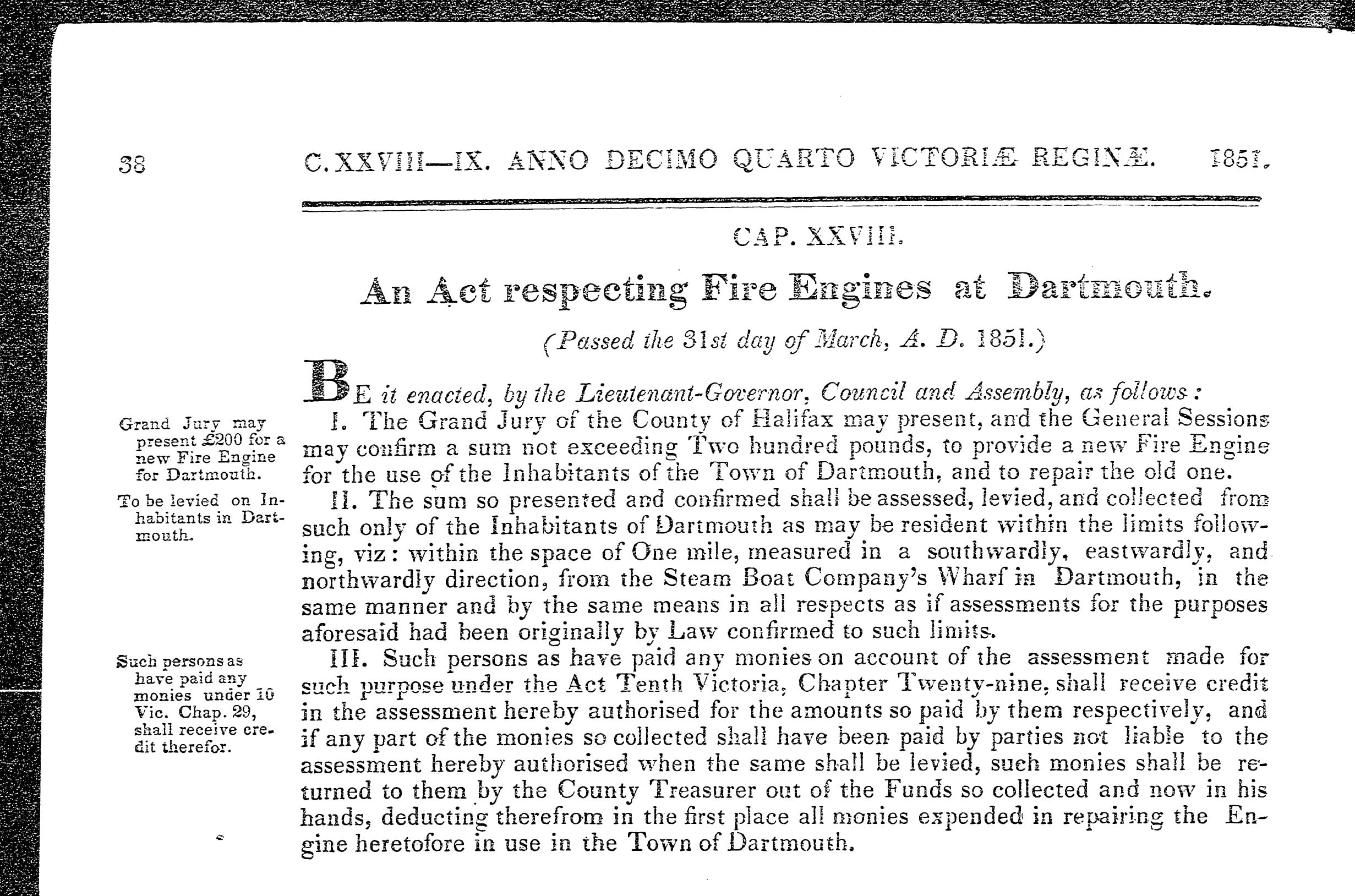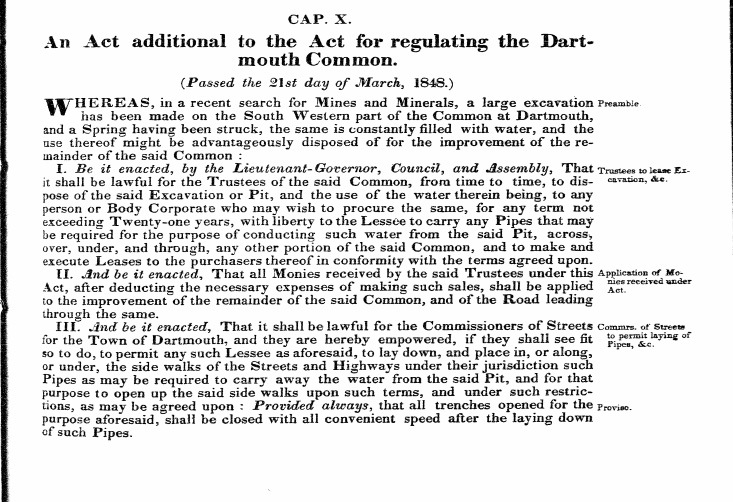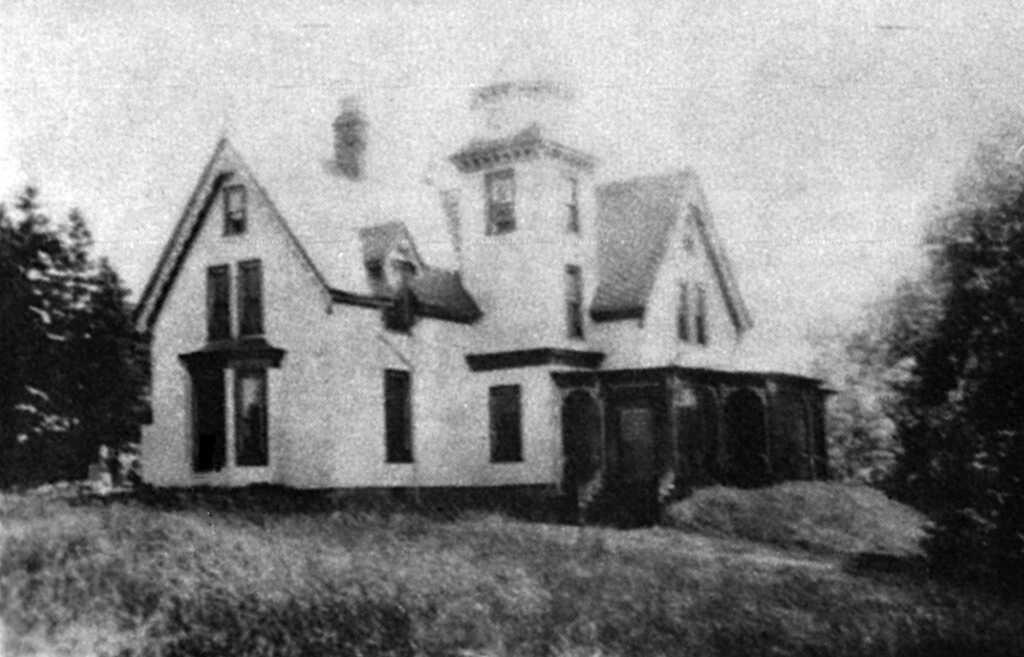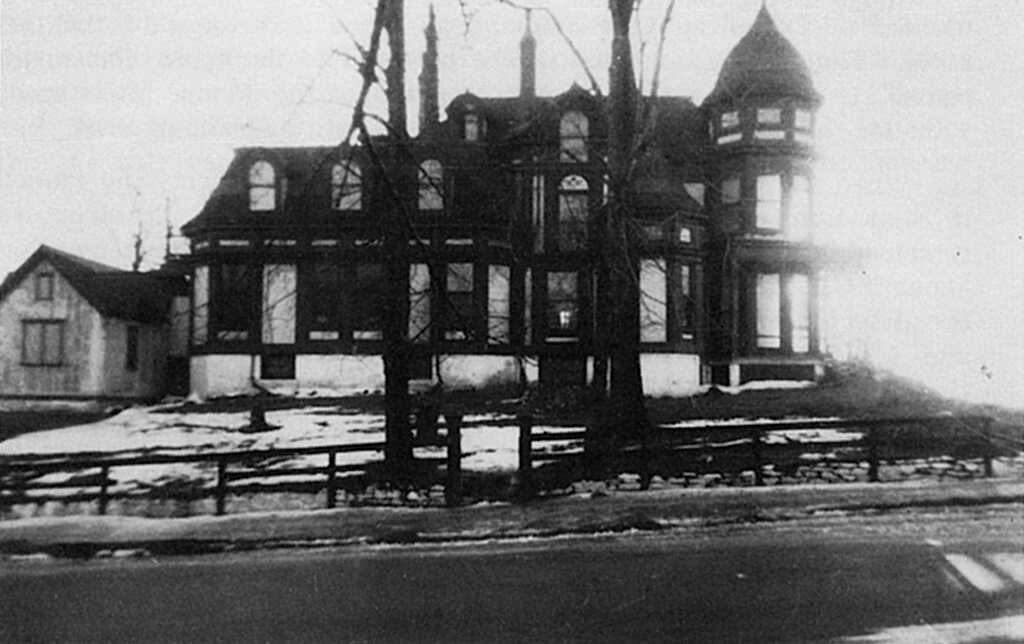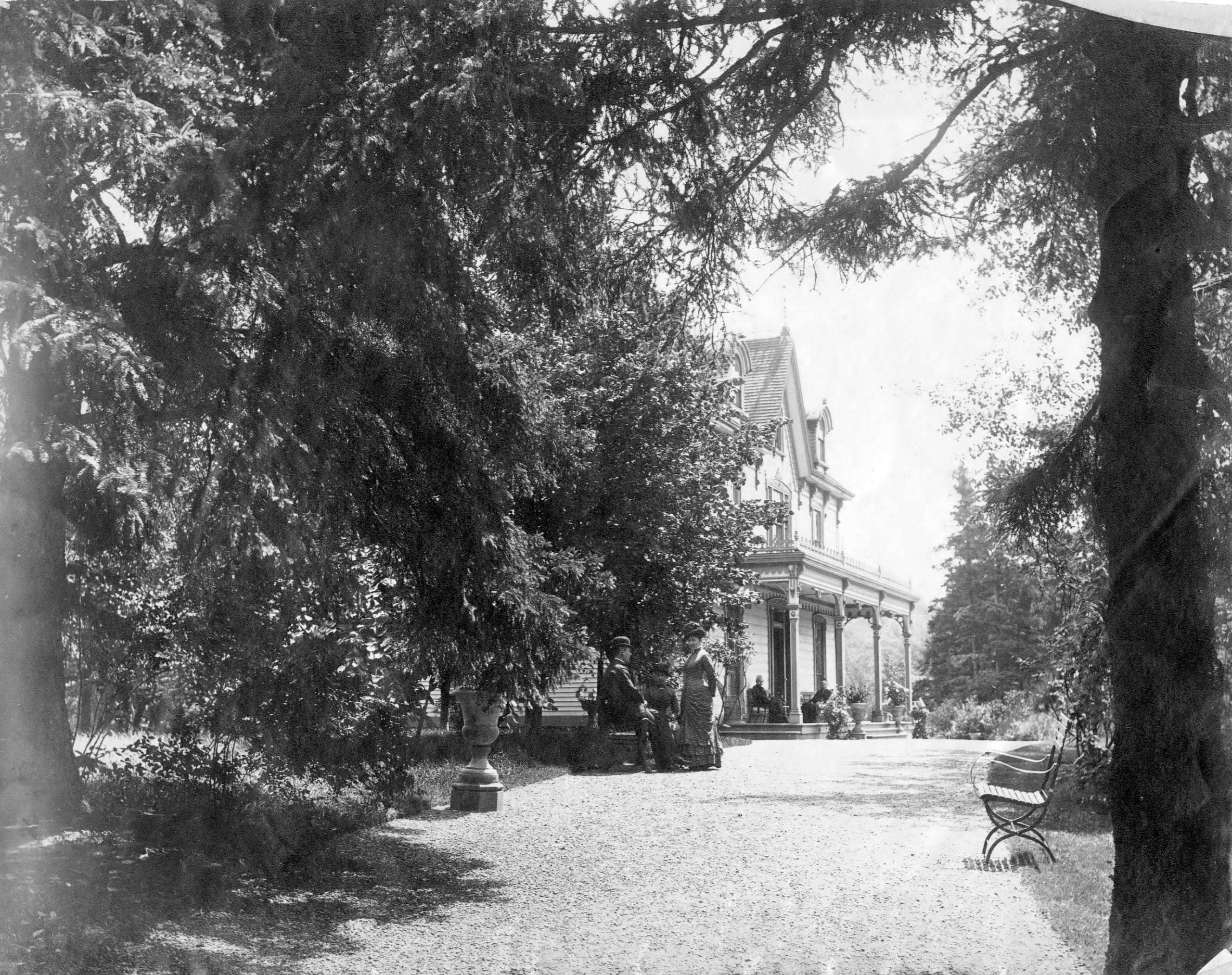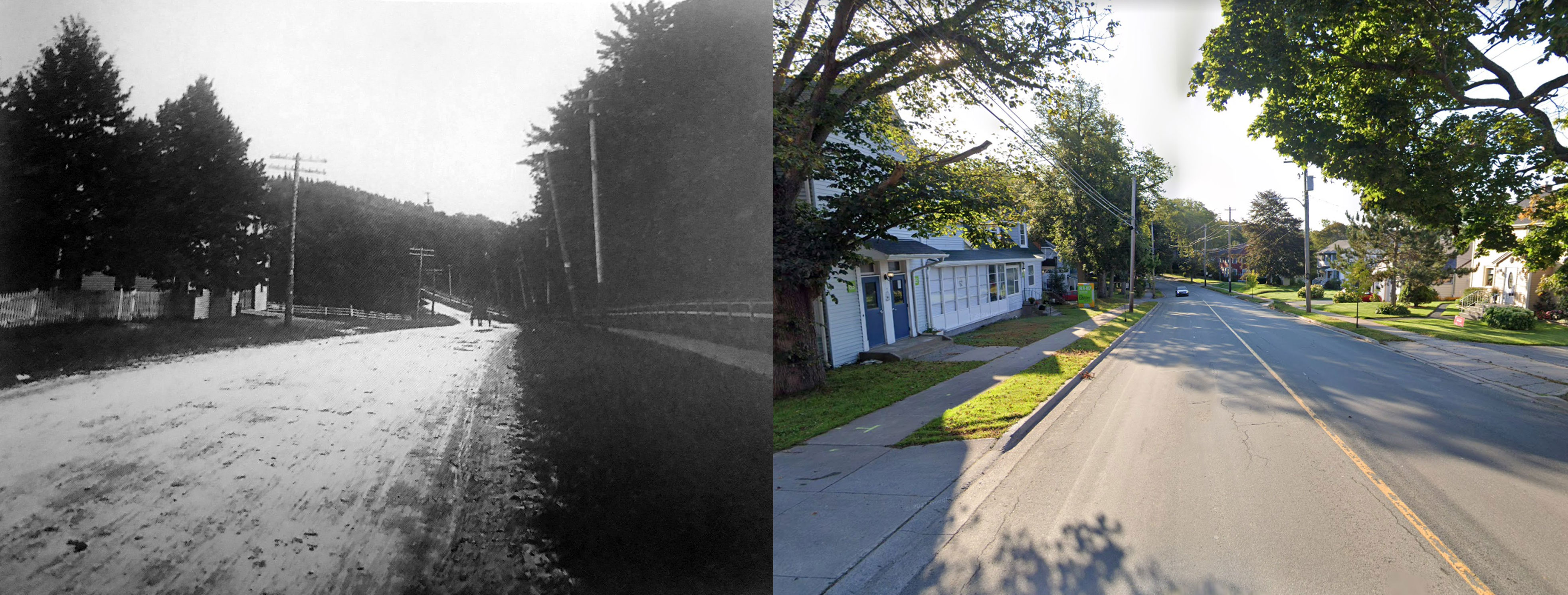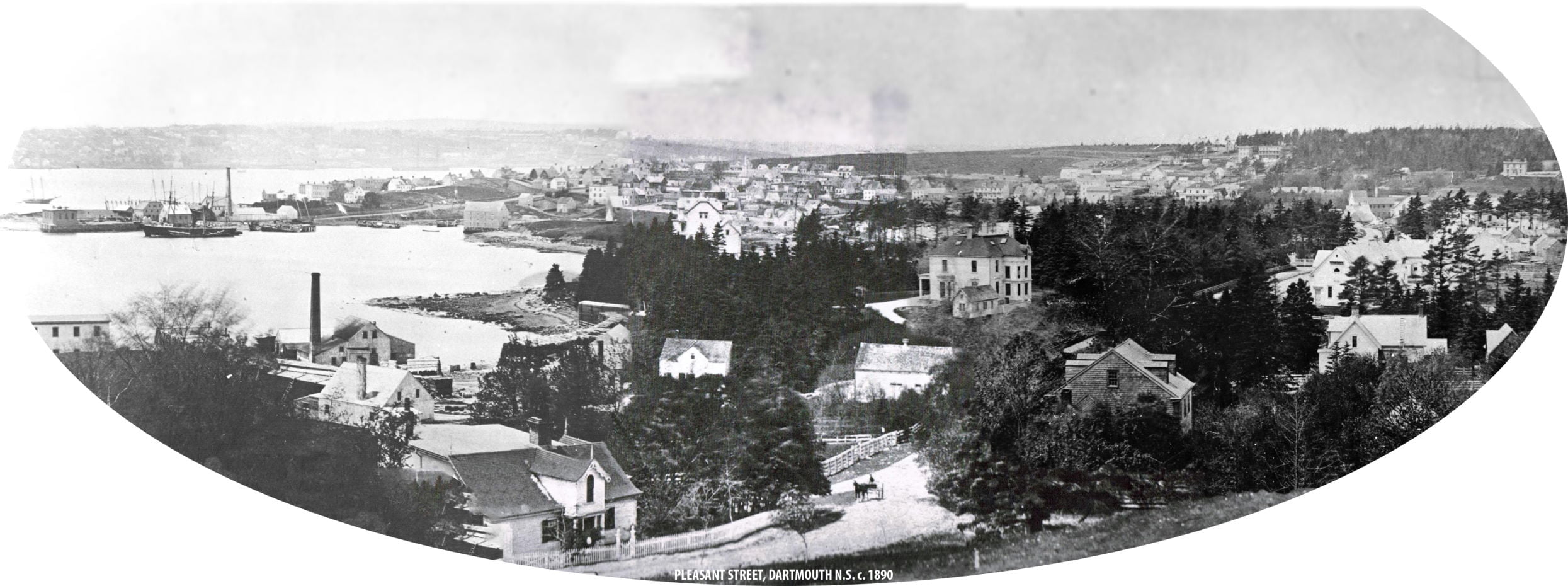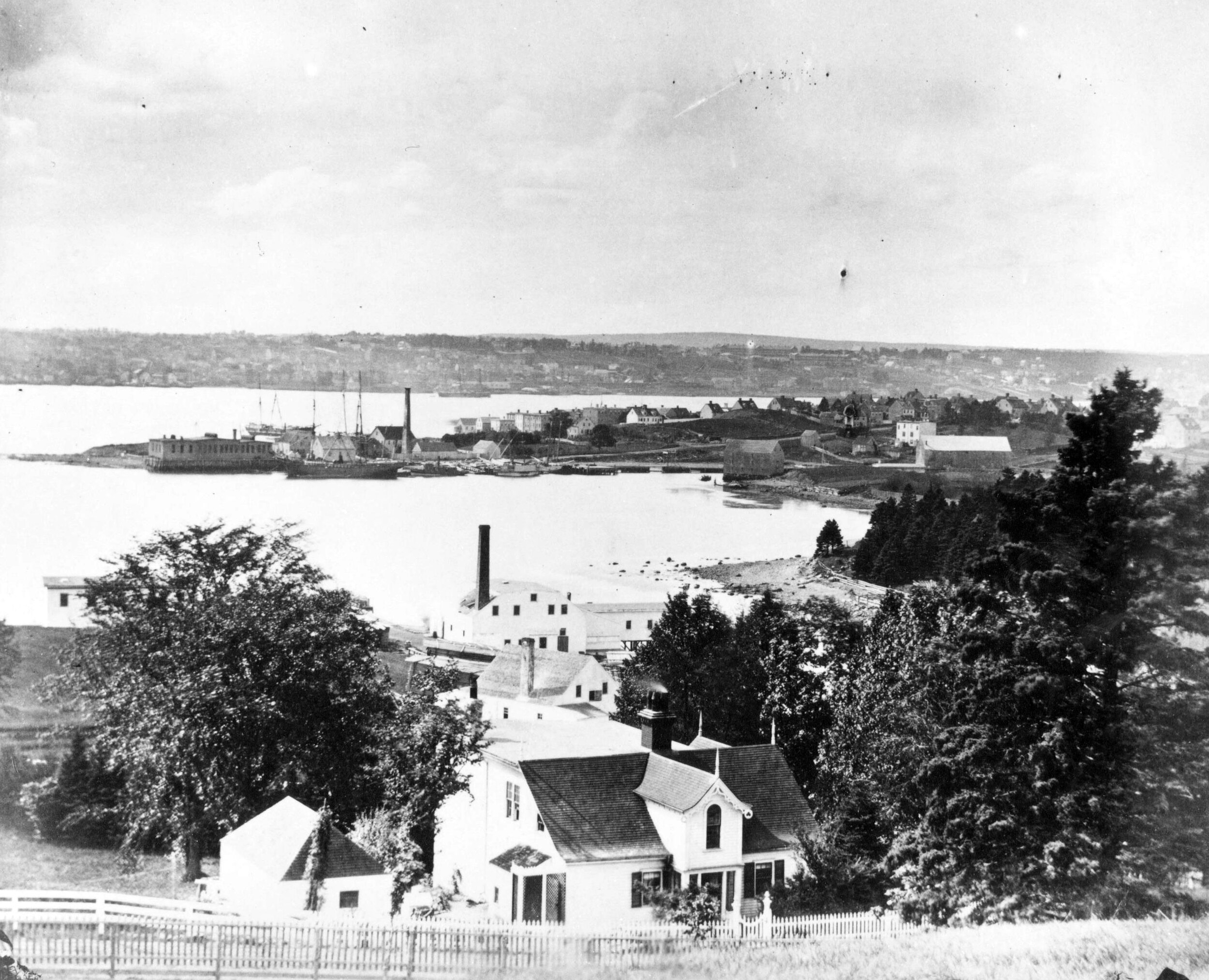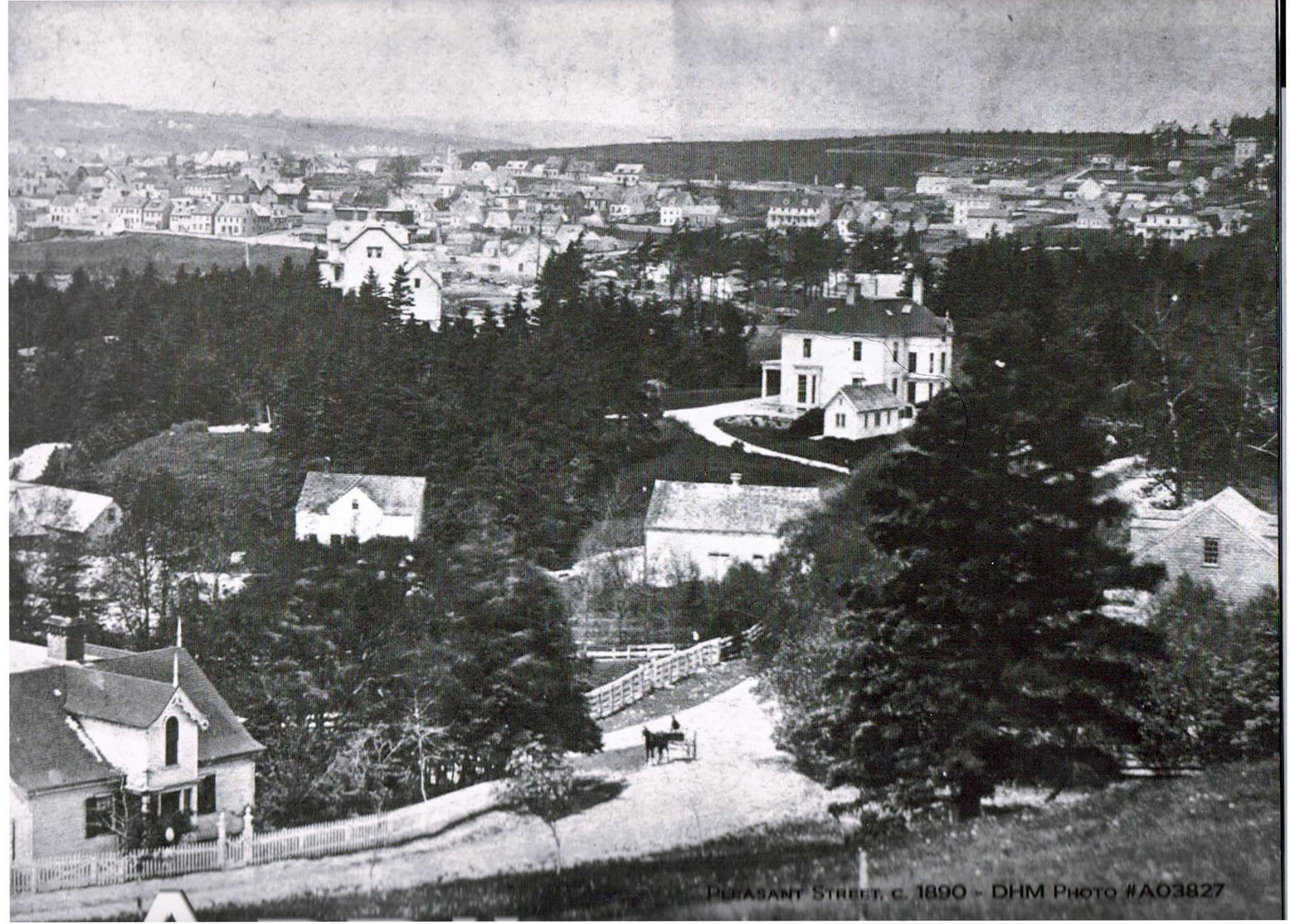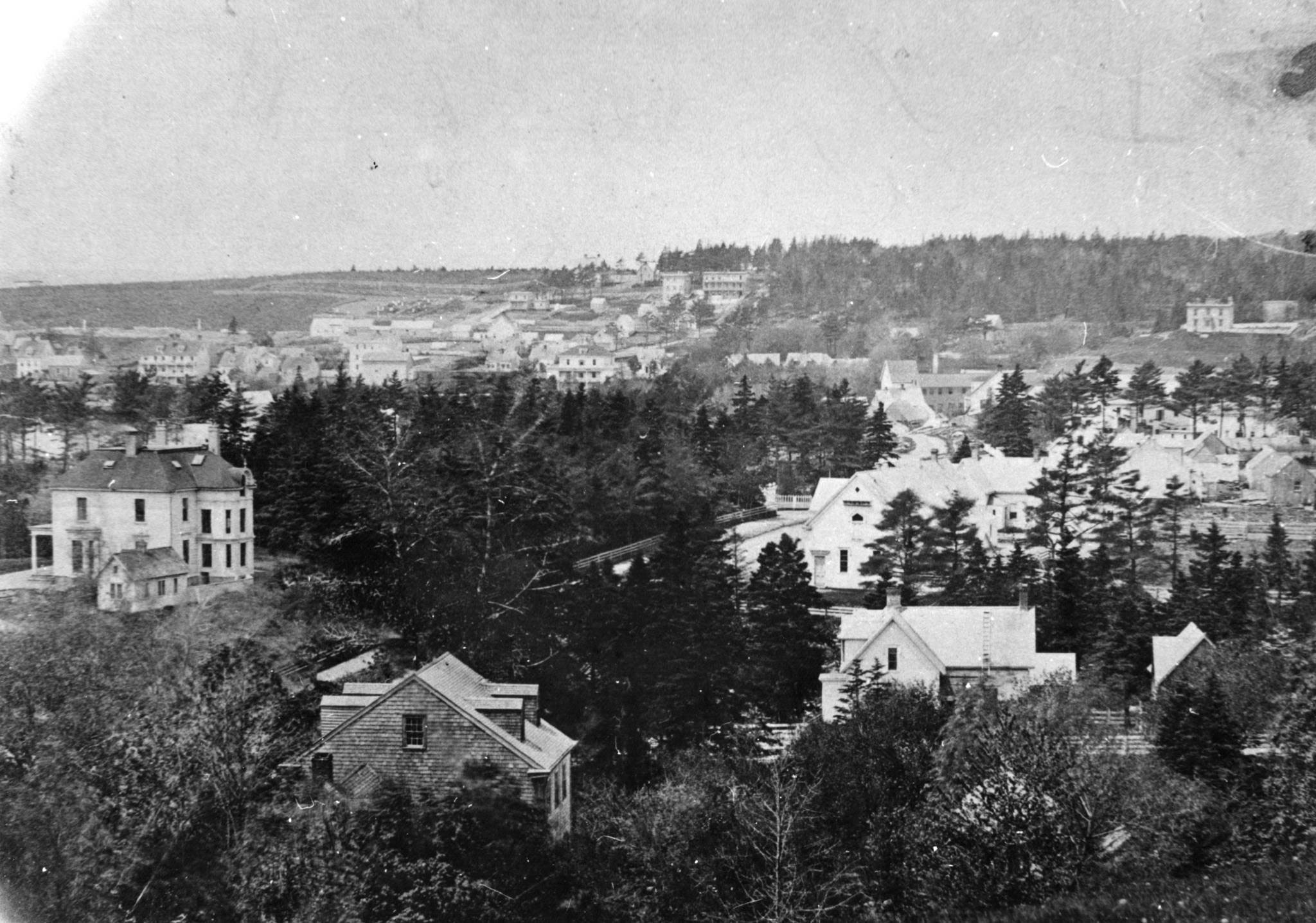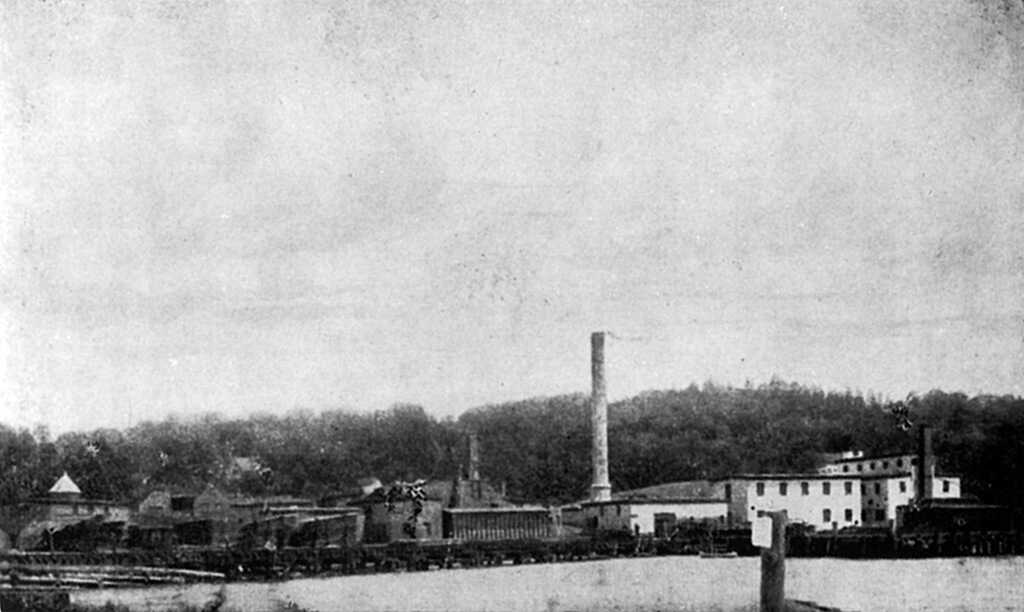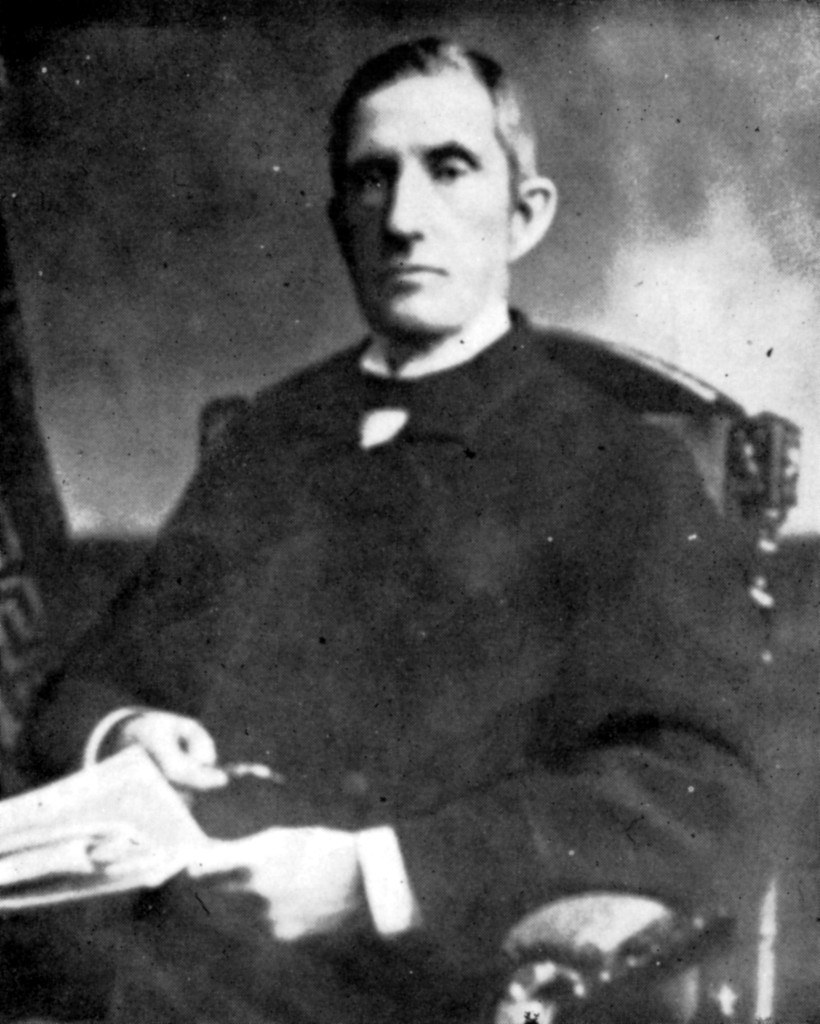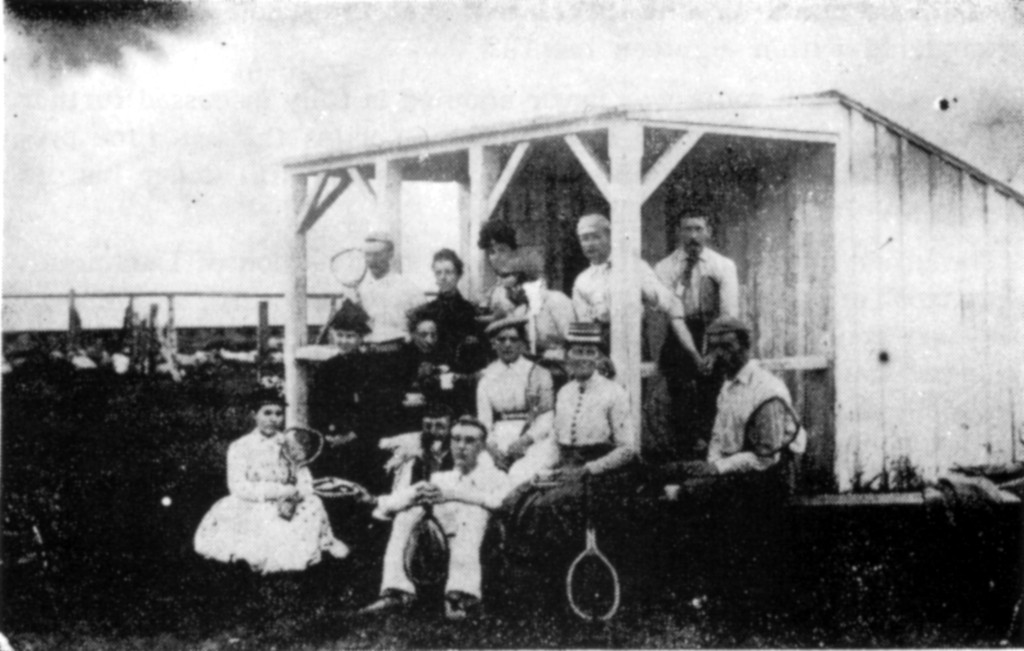At the beginning of the year 1850 Charles W. Fairbanks made a long report to the Legislature on the state of the Shubenacadie Canal. He proposed abandoning the two double-locks near Foster’s bridge in Dartmouth and the damaged locks at Porto Bello. At both these places, inclined planes were to be installed.
On a rainy night in May, the Steam Mill of H. Y. Mott and Son near Woodside was completely destroyed by fire. Large stocks of chocolate, cocoa, spices and other goods were consumed by flames.
Harbor regattas were revived that summer after suffering a lapse of three or four seasons. Again the naval men played a prominent part, and as usual many contestants were from Dartmouth. The ferry carried the customary crowd of excursionists.
On June 20th, St Andrew’s new church at Eastern Passage was blessed and dedicated by Bishop Walsh. The heat that day was oppressive. A steamer made two trips carrying crowds from Halifax.
The fields of Hon. J. E. Fairbanks were now being used for picnics of special groups and organizations. In August, the North British Society enjoyed an outing by ferry steamers to the wharf at “Woodside” where about 150 couples, “delighted in promenading through the romantic grounds of the kind proprietor”. Instead of a regular dinner being served, they adopted the old fashioned plan of “cut and come again”, says the newspaper report.
About that time the work of cutting out curves and hills to level and improve the eastern shore road, was finished as far as Musquodoboit Harbor. In order to commemorate such an advance in transportation facilities, it was arranged that leading public men should open the new road officially, and be among the first to drive from Dartmouth over this modern superhighway.
Accordingly, prominent Liberal party workers like James Lester Griffin, James Ormon and other residents of Porter’s Lake arranged for a summer picnic and road-opening ceremony in 1850 at George Ormon’s Inn where they entertained- a large group of ladies and gentlemen from Halifax, Dartmouth and the eastern settlements.
As will be learned from Hon. Joseph Howe’s letter to Lieutenant-Governor Sir John Harvey, the inhabitants on that day presented a petition asking that the whole length of the highway be called “The Harvey Road”. The name was referred to as such in Government reports for some years afterwards, but has since gone into disuse. (It is suggested that this very appropriate title be restored to commemorate one of the last acts of the hero of Stoney Creek.)
The Morning Chronicle’s lengthy account of the reception at Porter’s Lake stated that the visitors, “were met at George Ormon’s snug little inn by a deputation from the Eastern Harbours. The grounds around the Inn were embellished with flags and bouquets, water-lilies wreathed through the trees producing a very fine effect”.
After “an elegant and substantial repast” had been served, Hon. Joseph Howe was presented with a complimentary address by the inhabitants of the districts thereabouts. In an impromptu reply, Howe reviewed the great improvements made in the County roads during his 13 years in the Legislature. He recalled that his first journey on foot round the eastern shore, “cost me a fortnight”. Now he hoped, “to see a Stage Coach, before long, perform the journey in a single day”.
The whole party then, “proceeded over the new line to Musquodoboit Harbour, the cavalcade consisting of seven waggons and some horsemen. The new road forms a beautiful ride, is nearly level and has command of several interesting scenes”, concluded the report in the Chronicle.
Towards the close of 1850 the first gaslights appeared in Dartmouth when Dr. Abraham Gesner equipped the ferry-house, docks and boats with gasometers. The product was manufactured from Trinidad asphaltum, and could be generated more cheaply than that of the Halifax Gas Company which used other materials.
Although newspapers do not mention it, the year 1850 must have been the date of Tom Thumb’s visit to Dartmouth, as described by Mrs. Gould. In October the famous 15-pound midget performed in Halifax for nearly a week under the direction of P. T. Barnum.
The Nova Scotia Loan and Building Society, which was being organized at Halifax in 1850, numbered among its directors well-known Dartmouth men like John P. Mott, Charles Robson, John Tempest and James W. Johnston, junior.
(In the centenary booklet of the Building Society issued in 1950, there is a picture of the first house in Dartmouth upon which a loan was made by this new organization. The mortgage was taken out by John Whidden in August of 1850. This house stands at no. 60 Ochterloney Street, and is at present in the possession of Miss Emily Patterson, granddaughter of Jock Patterson, Crimean War veteran.)
